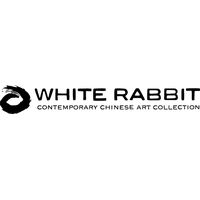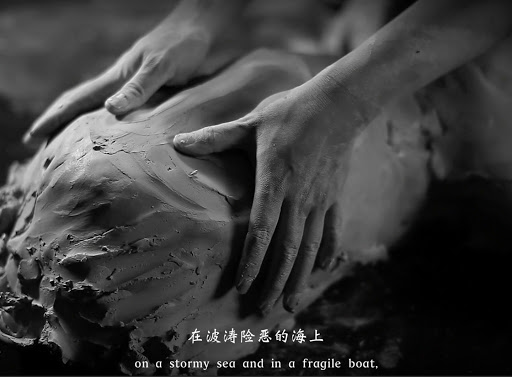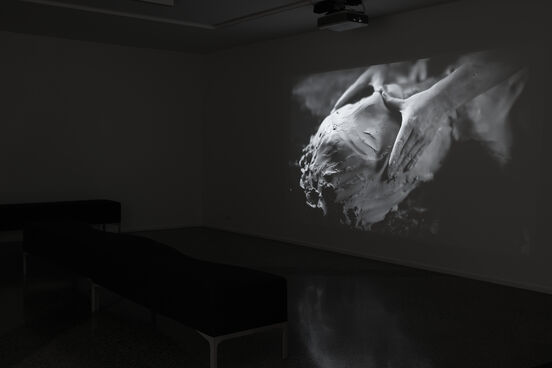Geng Xue’s artistic practice is centred around establishing a balance between traditional techniques and contemporary sensibilities. Drawing on the rich tradition of Chinese ceramics, Geng exploits the unique material qualities and meanings associated with the art form, particularly those linked to porcelain. White, translucent and delicate, porcelain possesses a vast symbolic language upon which Geng bases her work, rethinking and revitalising age-old traditions.
Geng is also interested in the process of making more broadly, often delving into the role of the artist and the relationship that exists between the creator and their work. Geng’s single-channel video work, Poetry of Michelangelo, 2015, symbolically explores this sometimes fraught exchange. The video depicts the artist shaping a male figure from clay, her body in direct contact with her medium. Once the figure is fully formed, Geng breathes air into its mouth, awakening the body and giving it life. Accompanied by subtitles taken from the sonnets of Michelangelo and punctuated by instructional steps describing the process of ceramic production, the creative act is likened to an act of divinity motivated by love.
The title, Poetry of Michelangelo, is of particular significance to the artist. Geng explains: ‘There are a lot of reasons why I borrowed his name to express myself, and one of the reasons is because of the word “Renaissance” itself. [...] In Chinese society, we also talk about cultural renaissance and revitalisation. Renaissance refers to the peak of an existing culture. I think every nation has a glorious peak of its culture and art.’ The romanticism associated with the Renaissance period is echoed in the video work, as Geng seeks to revive the traditional values connected to this historical climax in the visual arts.
This work is on loan from The White Rabbit Collection, Sydney


Geng Xue, Poetry of Michelangelo

Geng Xue, The Poetry of Michelangelo. Image: Samuel Hartnett.